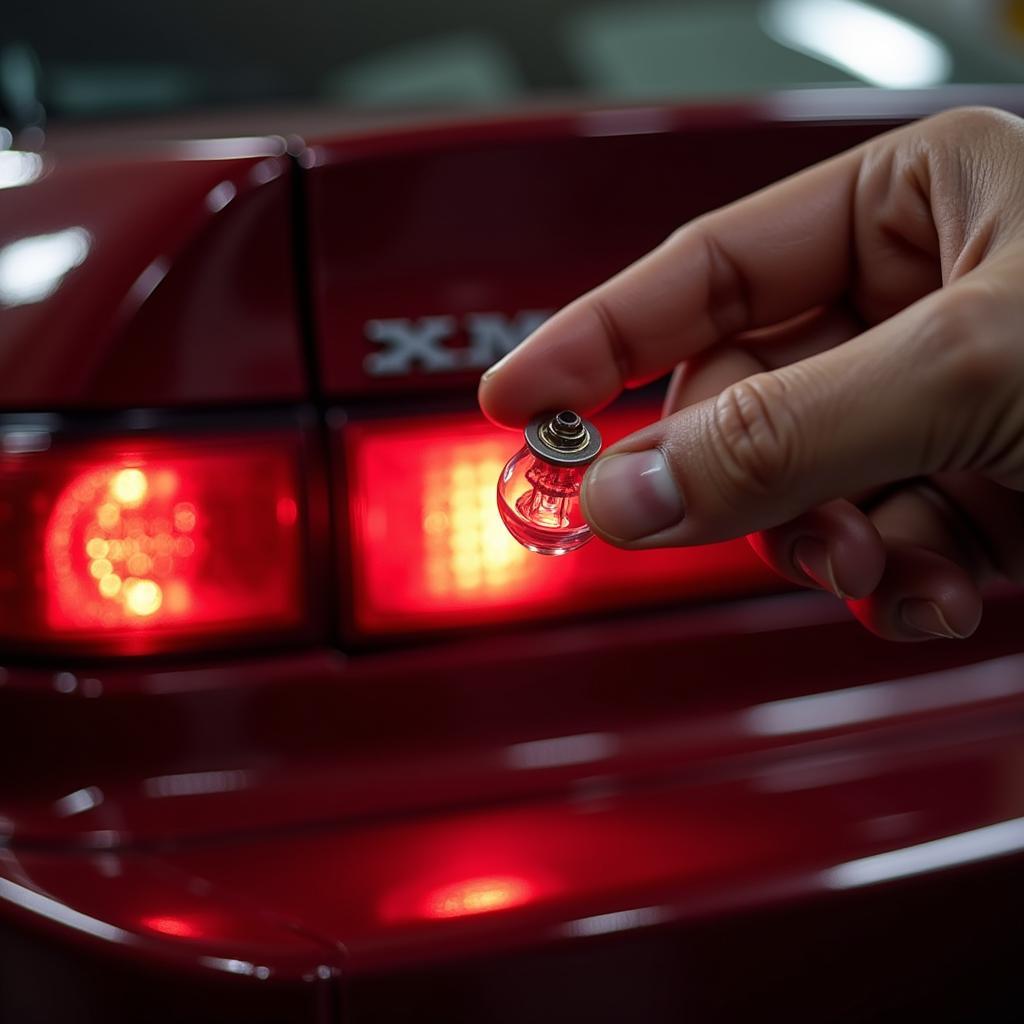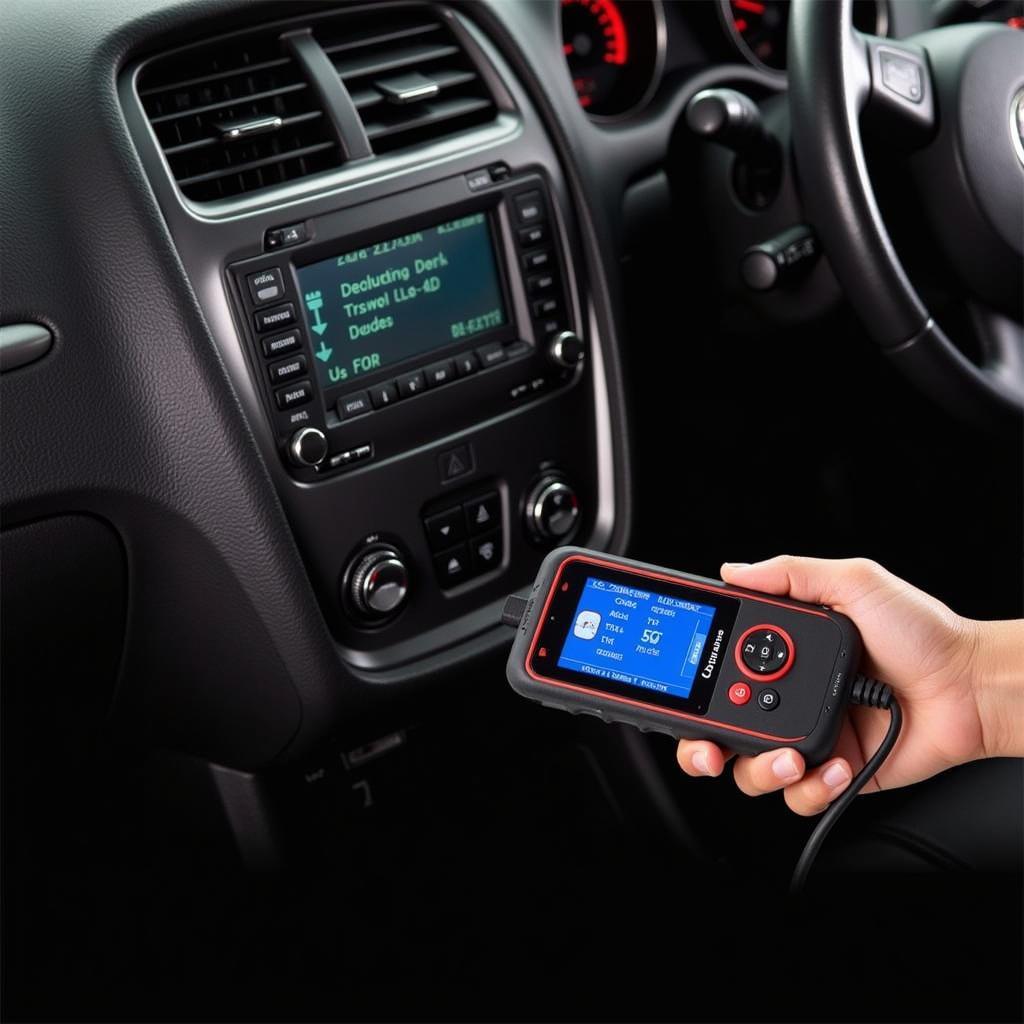Tesla 12v battery issues can be a frustrating experience, leaving you stranded and wondering what went wrong. This comprehensive guide will delve into the common causes of these problems, providing troubleshooting tips and solutions to get your Tesla back on the road. We’ll cover everything from diagnosing a dead 12v battery to preventative measures you can take. tesla model 3 low voltage battery warning can be an early indicator of trouble.
Understanding Your Tesla’s 12V Battery
Unlike traditional gasoline cars, Teslas rely on a high-voltage battery for propulsion. The 12v battery, however, powers the accessories, lights, and computer systems, much like in a conventional vehicle. Understanding this distinction is crucial for troubleshooting 12v battery issues.
Common Causes of Tesla 12V Battery Problems
Several factors can contribute to 12v battery issues in Teslas. These include:
- Parasitic Draw: Even when your Tesla is parked, certain systems continue to draw power from the 12v battery, like the alarm system or the always-on computer. A higher-than-normal parasitic draw can drain the battery prematurely. You might need to check for a car battery parasitic draw if this is suspected.
- Frequent Short Trips: Just like in traditional vehicles, short trips prevent the 12v battery from fully recharging, leading to premature wear and tear.
- Extreme Temperatures: Both extreme heat and cold can negatively impact battery performance and lifespan.
- Age: Over time, the 12v battery naturally degrades and loses its ability to hold a charge.
- Software Issues: In some cases, software glitches can interfere with the 12v battery charging system.
- Faulty Components: A malfunctioning alternator (in older models) or DC-DC converter can prevent the 12v battery from charging properly.
Troubleshooting Tesla 12V Battery Issues
Before calling for roadside assistance, there are a few troubleshooting steps you can try:
- Check the Tesla App: The app often provides alerts about low 12v battery voltage.
- Try a Jump Start: If the car is completely unresponsive, a jump start might be necessary. Remember to connect the jumper cables to the correct points in the frunk.
- Inspect the 12V Battery Terminals: Ensure the terminals are clean and securely connected. Corrosion can impede the flow of electricity.
What to Do if Your Tesla Has a Dead 12V Battery
If your Tesla has a tesla dead 12v battery, don’t panic. There are solutions available. Contacting Tesla service is often the best course of action, especially if the issue is related to a software glitch or a faulty component.
“Regularly checking your 12v battery health is crucial for avoiding unexpected breakdowns,” advises John Smith, a leading Tesla technician at Tesla Service Center in Austin, Texas.
Preventing Tesla 12V Battery Issues
Maintaining your Tesla’s 12v battery involves a few simple steps:
- Avoid Frequent Short Trips: Consolidate errands when possible to allow the battery to charge fully.
- Limit Accessory Use While Parked: Turn off unnecessary features like Sentry Mode or cabin overheat protection if you anticipate parking for an extended period.
- Monitor the Tesla App: Pay attention to any low voltage warnings.
“A well-maintained 12v battery can significantly extend its lifespan and prevent inconvenient situations,” says Emily Davis, an experienced automotive electrical engineer specializing in Tesla systems.
Conclusion
Tesla 12v battery issues are a reality for some owners, but understanding the causes and preventative measures can help you avoid these problems. By staying proactive and informed, you can keep your Tesla running smoothly. If you experience a tesla model s low voltage battery warning, don’t hesitate to contact Tesla Service. And remember to always check your tesla brake warning as well, to ensure optimal safety. Addressing potential issues early can save you time and money in the long run.


